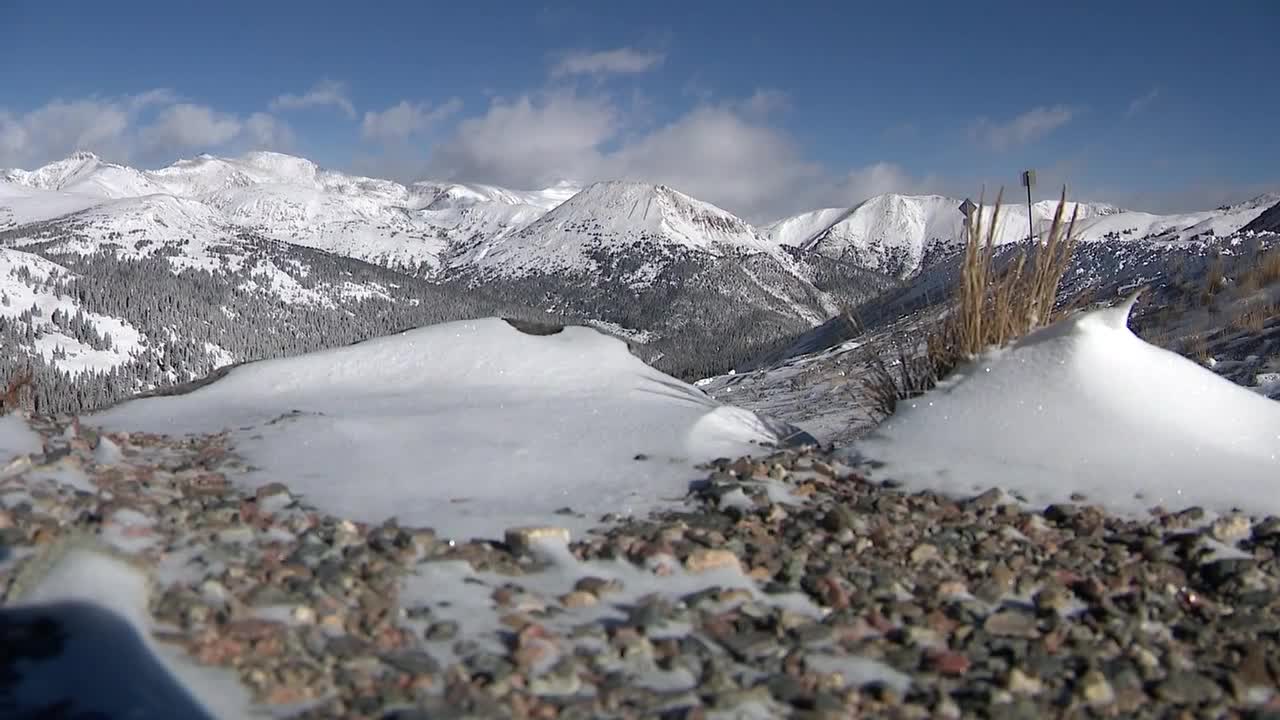CLEAR CREEK COUNTY, Colo. — Fresh early-season snow blanketed the top of Loveland Pass on a chilly Tuesday morning, bringing out backcountry skiers like Jack Sudduth.
“I think I spent maybe 90 days not on my skis this year,” said Sudduth, who also works as a ski patroller at Loveland Ski Area.
But the backcountry fun also comes with avalanche risk. Sudduth calls it “bad” in steep areas around the pass.
“The risk is there and it exists, and it'll just keep going up because all the snow that we have now is going to be our avalanche problem in two months,” he told Scripps News Denver Tuesday.
Denny Schaedig, another backcountry skier and neuroscientist, is working on a solution. He is pairing his love for the outdoors with artificial intelligence to better gauge avalanche risk.
The effort began as part of a capstone project for Schaedig’s AI and machine learning master’s degree at Colorado State University Global. The fully online school allowed him to live and work in the Silverthorne area and be able to do research in the surrounding mountains.

“I was trying to find a project that could have maybe a positive impact on my community,” he told Denver7. “This has true impact. It could help people be more informed as they're going into the backcountry and, yeah, maybe even save lives.”
Schaedig’s process starts with taking thousands of snow samples, using an apple core to collect them several feet deep in different Front Range locations.
As he also explains on his website, he also collects data at those sites, like GPS coordinates, slope angle, snow temperature and avalanche reports from the Colorado Avalanche Information Center (CAIC).
He then uses a specialized lens to take detailed pictures of the samples and input them into a generative adversarial network (GAN) called snowGAN, a generative AI model he built. Over time, the many samples help the AI understand snow’s many features.

Schaedig said he collected about 3,000 snow samples last winter.
“We're originally starting off with generative AI, where basically it's learning all these intricate features of the snow and using those features to generate realistic pictures of snow so it understands the snow in general,” he explained. “Then we kind of flip the script a little bit, and we now have it, instead, try and predict how many avalanches occur in a region or on a slope.”
Schaedig is now employing transfer learning, using the AI’s growing knowledge of snow as the base for a new model called AvAI to be able to predict avalanche risk based on input data and new snow photos.
“One of the biggest problems with our data set is we need it to have snow from all different types of environments that it's going to be predicting in,” he said.
That’s why Schaedig plans to now explore and take samples in new areas, while encouraging people across Colorado to add their own samples.
“I’m making it open source, so anybody can explore it if they want; the code for the model and all the data is available,” he said, before acknowledging how important it is for this predictive AI to be accurate, given how dangerous and deadly avalanches can be. “People's lives are at risk with this AI. And I want to take that seriousness with me at every stage.”

Recreation
First skier-triggered avalanche of the season was reported on Friday, CAIC says
Admittedly, the slopes are where many like to unplug from technology.
“I touch a computer, maybe, like three times a year,” Sudduth said with a laugh.
But Schaedig hopes one day his technology can give skiers and boarders a reliable warning.
“As we can collect enough data, and we, you know, put in enough effort, I think it's 100% possible,” he said.

Swire, Coca-Cola announces $475 million manufacturing plant for Colorado Springs
The Colorado Springs Chamber and EDC announcing a major new project during a special event at the U.S. Olympic and Paralympic Museum Wednesday.
____
Watch KOAA News5 on your time, anytime with our free streaming app available for your Roku, FireTV, AppleTV and Android TV. Just search KOAA News5, download and start watching.





